Flexabenz Plus Tablet
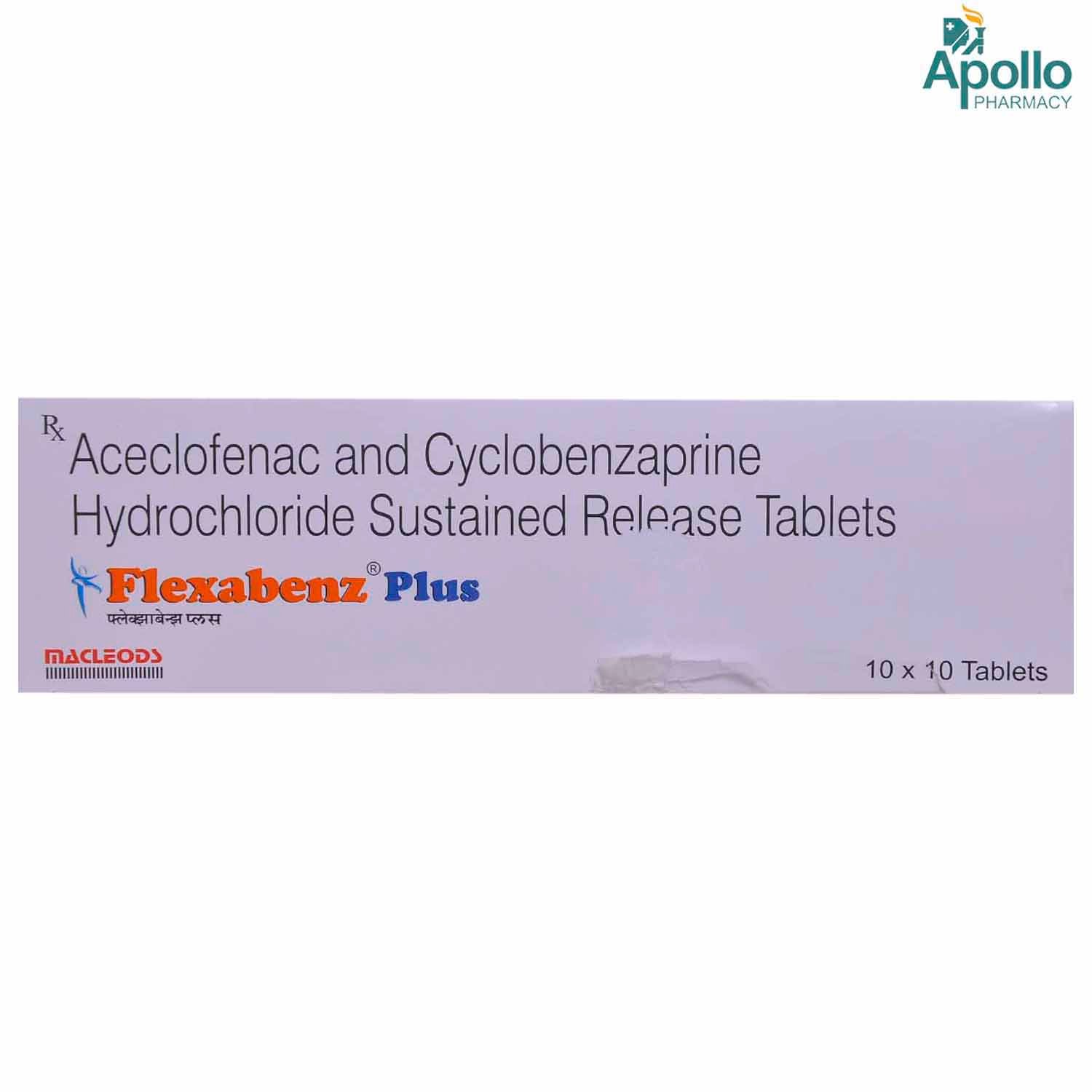
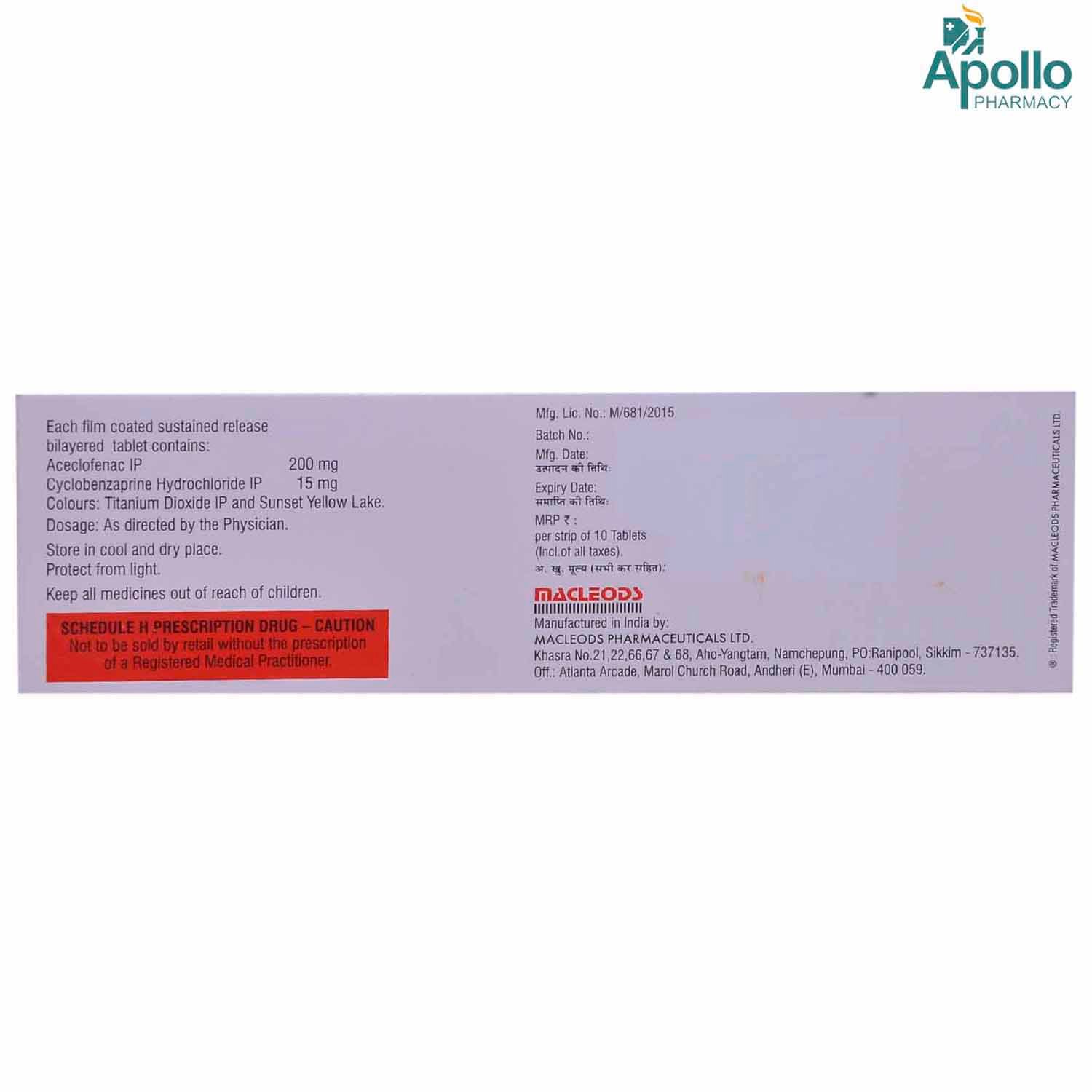
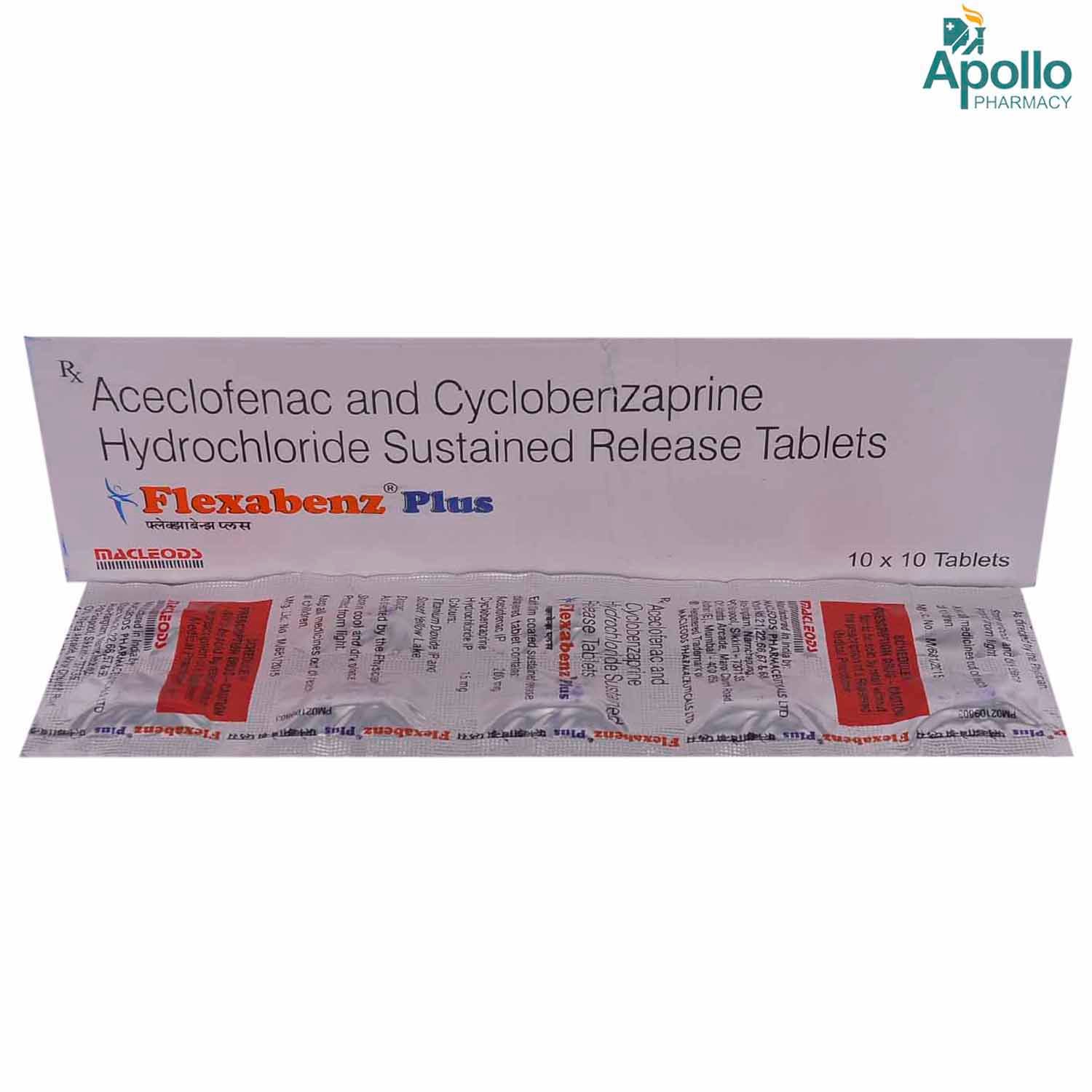
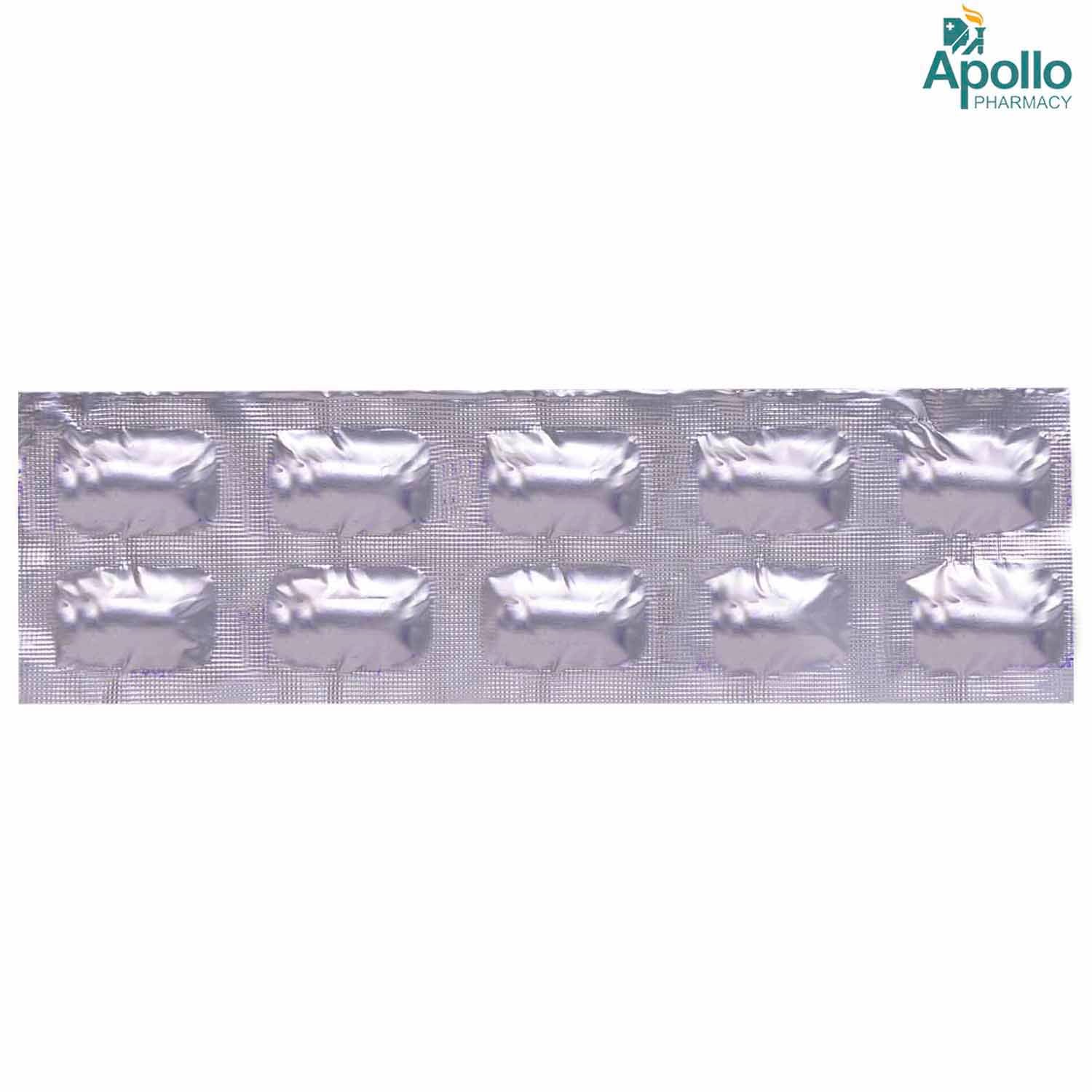
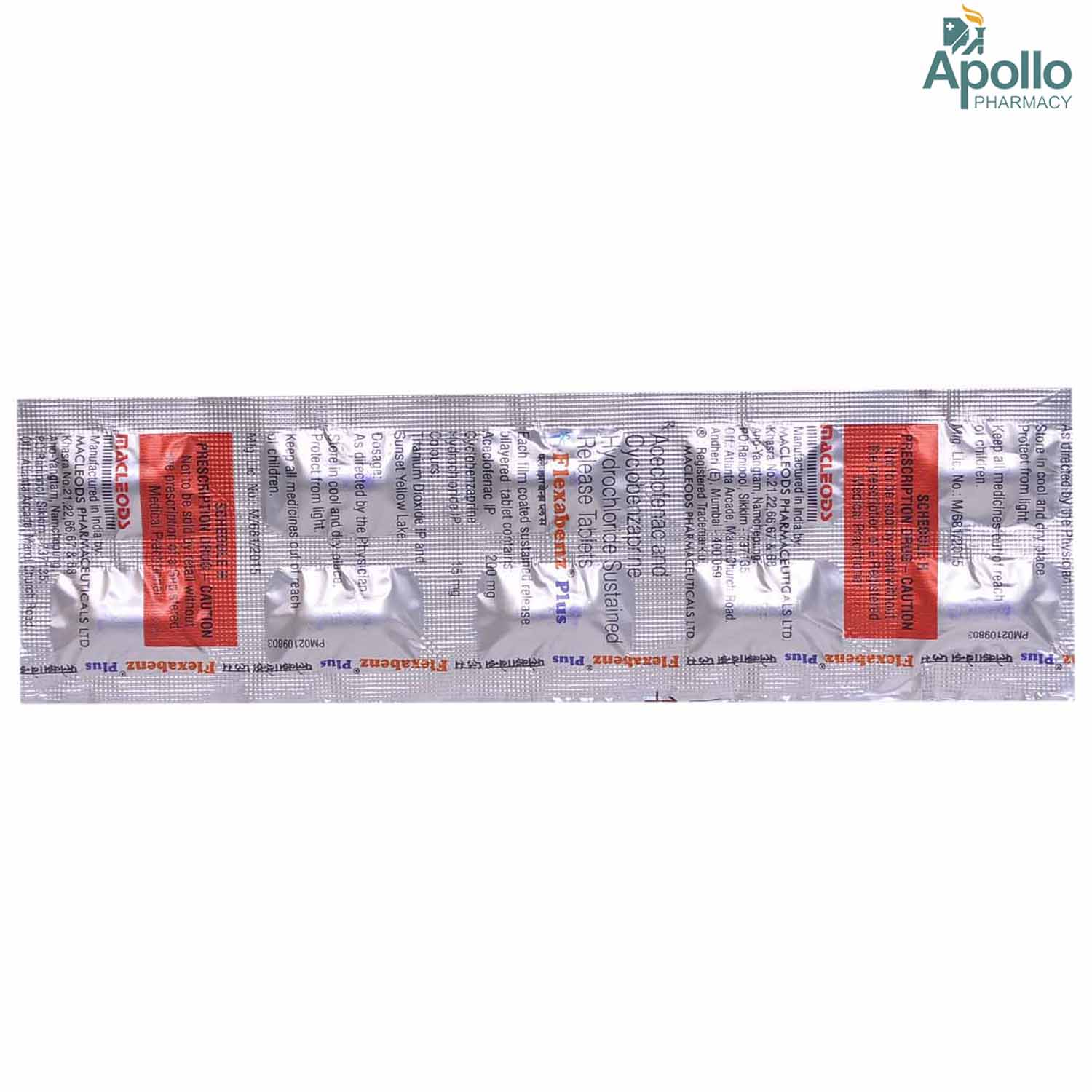
MRP ₹312
(Inclusive of all Taxes)
₹46.8 Cashback (15%)
know your delivery time
Provide Delivery Location
Composition :
Manufacturer/Marketer :
Consume Type :
Expires on or after :
Return Policy :

Secure Payment

Trusted by 8 Crore Indians

Genuine Products
Therapeutic Class
Country of origin
Manufacturer/Marketer address
Disclaimer
Alcohol
Safe if prescribed
Avoid consumption of alcohol while taking Flexabenz Plus Tablet as it may increase drowsiness. It can also increase the risk of stomach bleeding.
Pregnancy
Consult your doctor
Avoid taking Flexabenz Plus Tablet if you are pregnant unless prescribed by a doctor. Please consult your doctor if you have any concerns regarding this, your doctor will prescribe only if the benefits outweigh the risks.
Breast Feeding
Consult your doctor
Very-small amounts of Flexabenz Plus Tablet pass into breast milk. However, consult your doctor before taking Flexabenz Plus Tablet , your doctor will decide whether Flexabenz Plus Tablet can be taken by breastfeeding mothers or not.
Driving
Safe if prescribed
Flexabenz Plus Tablet may cause drowsiness, sleepiness, fatigue, dizziness and visual disturbance it is advisable to you do not drive unless you are alert.
Liver
Consult your doctor
Dose adjustment may be needed in patients with liver impairment. Please consult your doctor if you have a liver impairment or any concerns regarding this.
Kidney
Consult your doctor
Dose adjustment may be needed in patients with kidney impairment. Please consult your doctor if you have kidney impairment or any concerns regarding this. Avoid taking Flexabenz Plus Tablet if you have severe kidney disease.
Children
Safe if prescribed
Flexabenz Plus Tablet should not be given to children for 18 years of age as the safety and effectiveness were not established.
Product Substitutes
About Flexabenz Plus Tablet
Flexabenz Plus Tablet belongs to a class of medicine known as a pain killer. It is primarily used to reduce and relieve pain due to muscle spasms (painful muscular contractions) associated with spondylitis (inflammation in spinal bones), osteoarthritis (lifelong joint pain and stiffness), rheumatoid arthritis (joint pain), gout, pinched vein, acute pain and chronic pain, muscle spasms. It relieves the pain and relaxes the muscles. Pain is a symptom triggered by the nervous system, causing uncomfortable sensations in the body. Muscle spasm is the sudden involuntary contractions of the muscle, which can be painful and uncomfortable.
Flexabenz Plus Tablet is a combination of two drugs: Cyclobenzaprine (muscle relaxant) and aceclofenac (NSAID). Cyclobenzaprine is a muscle relaxant and works on the centers of the spinal cord and brain. This helps relieve muscle stiffness and improves muscle movements, thereby helping relieve pain due to muscle spasms. Aceclofenac blocks the effect of a chemical messenger known as cyclo-oxygenase (COX) enzyme that makes other chemical prostaglandins (PG). By blocking the effect of chemical messenger aceclofenac helps in reducing mild to moderate pain and inflammation at the injured or damaged site.
Take Flexabenz Plus Tablet as prescribed by your doctor. You are advised to take Flexabenz Plus Tablet for as long as your doctor has prescribed it for you depending on your medical conditions. You may experience nausea, dryness in the mouth, stomach pain, diarrhea, heartburn, loss of appetite (feeling not hungry), dizziness and sleepiness. Most of these side effects of Flexabenz Plus Tablet do not require medical attention and gradually resolve over time. However, if the side effects persist or worsen, please consult your doctor.
Do not use Flexabenz Plus Tablet if you are allergic to Flexabenz Plus Tablet or any of its contents. Flexabenz Plus Tablet should not be taken in the conditions like liver disease, kidney disease, asthma and high blood pressure. Flexabenz Plus Tablet may cause drowsiness, sleepiness, fatigue, dizziness and visual disturbance it is advisable to you do not drive unless you are alert. If you are pregnant or breastfeeding, please inform your doctor before starting Flexabenz Plus Tablet . Flexabenz Plus Tablet should not be used in children below 18 years of age as safety and efficacy have not established.
Uses of Flexabenz Plus Tablet
Medicinal Benefits Mweb
Key Benefits
Flexabenz Plus Tablet is a combination of two drugs: Cyclobenzaprine (muscle relaxant) and aceclofenac (NSAID). Flexabenz Plus Tablet is used for the treatment of osteoarthritis, rheumatoid arthritis, gout and ankylosing spondylitis, pinched vein, acute pain, chronic low back pain and muscle spasms. Cyclobenzaprine works on the centers of the spinal cord and brain. This helps relieve muscle stiffness and improves muscle movements, thereby helping relieve pain due to muscle spasms. Aceclofenac blocks the effect of a chemical messenger known as cyclo-oxygenase (COX) enzyme that makes another chemical 'prostaglandin' (PG). These chemicals are produced at injury sites and cause pain and swelling. By blocking the effect of chemicals, aceclofenac helps in reducing mild to moderate pain and inflammation at the injured or damaged site. Thus, Flexabenz Plus Tablet relieves the pain and relax the muscles.
Directions for Use
Side Effects of Flexabenz Plus Tablet
- Nausea
- Dryness in mouth
- Stomach pain
- Diarrhea
- Heartburn
- Loss of appetite (feeling not hungry)
- Dizziness
- Sleepiness.
Drug Warnings
Flexabenz Plus Tablet should not be taken if you are known to be allergic to Flexabenz Plus Tablet or any other medicines. Flexabenz Plus Tablet can increase your risk of fatal heart attack or stroke. So, if you have had any recent heart surgery, do not use Flexabenz Plus Tablet . Inform your doctor if you have thyroid disorder (hyperthyroidism), stomach ulcers, have suffered bleeding problems, clotting problems, severe heart, liver or kidney problems. Please talk to your doctor immediately if you experience mood swings, depression or if you have any suicidal thoughts. Your doctor may advise you to undergo regular blood tests to monitor liver function. Inform your doctor before taking Flexabenz Plus Tablet if you have or had disorders of the stomach, blood circulation problem to brain, asthma, porphyria, diabetes, high blood pressure. Flexabenz Plus Tablet may cause drowsiness, sleepiness, fatigue, dizziness and visual disturbance it is advisable to you do not drive unless you are alert. If you are pregnant or breastfeeding, please inform your doctor before starting Flexabenz Plus Tablet . Flexabenz Plus Tablet should not be used in children below 18 years of age as safety and efficacy have not established.
Drug-Drug Interactions
Drug-Drug Interactions
Login/Sign Up
Coadministration of Safinamide with Flexabenz Plus Tablet might raise serotonin hormone levels which can increase the risk of developing side effects.
How to manage the interaction:
Taking Safinamide with Flexabenz Plus Tablet is not recommended, but can be taken together if prescribed by a doctor. However, if you experience fever, palpitations, excessive sweating, muscle spasm, or diarrhea, contact a doctor immediately. Do not discontinue the medications without consulting a doctor.
Coadministration of Flexabenz Plus Tablet with Tranylcypromine might raise serotonin hormone levels which can increase the risk of developing side effects.
How to manage the interaction:
Taking Tranylcypromine with Flexabenz Plus Tablet is not recommended, but can be taken together if prescribed by a doctor. However, if you experience fever, palpitations, excessive sweating, muscle spasm, or diarrhea, contact a doctor immediately. Do not discontinue the medications without consulting a doctor.
Taking Flexabenz Plus Tablet with Phenelzine might raise serotonin hormone levels which can increase the risk of developing side effects.
How to manage the interaction:
Taking Flexabenz Plus Tablet with Phenelzine can possibly lead to an interaction. It can be taken if prescribed by doctor.However, if you experience fever, palpitations, excessive sweating, muscle spasm, or diarrhea, contact a doctor immediately. Do not discontinue the medications without consulting a doctor.
Taking Flexabenz Plus Tablet with rasagiline might raise serotonin hormone levels which can increase the risk of developing side effects.
How to manage the interaction:
Although rasagiline with Flexabenz Plus Tablet is not recommended, but it can be taken if your doctor has advised it. However, if you experience fever, palpitations, excessive sweating, muscle spasm, or diarrhea, contact a doctor immediately. Do not discontinue the medications without consulting a doctor.
Co-administration of Atenolol with Flexabenz Plus Tablet could increase the risk of low blood pressure.
How to manage the interaction:
Although there is a possible interaction between Atenolol and Flexabenz Plus Tablet, you can take these medicines together if prescribed by a doctor. Consult a doctor if you experience excessive sweating, shortness of breath, palpitations, or chest discomfort. Do not discontinue any medications without consulting a doctor.
Taking Flexabenz Plus Tablet with Vortioxetine might raise serotonin hormone levels which can increase the risk of developing side effects.
How to manage the interaction:
Taking Flexabenz Plus Tablet with Vortioxetine can possibly lead to an interaction. It can be taken if prescribed by a doctor. However, if you experience fever, palpitations, excessive sweating, muscle spasm, or diarrhea, contact a doctor immediately. Do not discontinue the medications without consulting a doctor.
Coadministration of Flexabenz Plus Tablet with Nalbuphine can increase the risk of developing side effects.
How to manage the interaction:
Although taking Flexabenz Plus Tablet and Nalbuphine together can cause an interaction, it can be taken if your doctor has suggested it. However, if you experience dizziness, shortness of breath, palpitations, or chest discomfort, consult your doctor. Do not stop using any medications without talking to a doctor.
Taking Flexabenz Plus Tablet with Zolmitriptan might raise serotonin hormone levels which can increase the risk of developing side effects.
How to manage the interaction:
Taking Flexabenz Plus Tablet with Zolmitriptan can possibly lead to an interaction. It can be taken if prescribed by doctor. However, if you experience fever, palpitations, excessive sweating, muscle spasm, or diarrhea, contact a doctor immediately. Do not discontinue the medications without consulting a doctor.
Taking Flexabenz Plus Tablet with Hydrocodone can increase the risk of developing side effects.
How to manage the interaction:
Although there is a possible interaction between Flexabenz Plus Tablet and Hydrocodone, you can take these medicines together if prescribed by your doctor. If you experience symptoms like difficulty breathing, dizziness, excessive sweating, or palpitations, contact a doctor. Do not stop using any medications without a doctor's advice.
Coadministration of Flexabenz Plus Tablet with Nefazodone might raise serotonin hormone levels which can increase the risk of developing side effects.
How to manage the interaction:
Taking Flexabenz Plus Tablet with Nefazodone can possibly lead to an interaction. It can be taken if prescribed by doctor. However, if you experience fever, palpitations, excessive sweating, muscle spasm, or vomiting, contact a doctor immediately. Do not discontinue the medications without consulting a doctor.
Drug-Food Interactions
Drug-Food Interactions
Login/Sign Up
Drug-Diseases Interactions
Drug-Diseases Interactions
Login/Sign Up
Drug-Drug Interactions Checker List
- DIGOXIN
- ASPIRIN
- MORPHINE
- CLOPIDOGREL
- SELEGILINE
- LITHIUM
- CAPTOPRIL
- AMILORIDE
- TACROLIMUS
- CHLORPHENIRAMINE
- ZOLPIDEM
Habit Forming
Special Advise
Flexabenz Plus Tablet is not recommended for use in patients with a history of gastrointestinal ulcers or bleeding since it may worsen the patient's condition.
Diet & Lifestyle Advise
- Physical activity helps in strengthening muscles and relieves joint stiffness. Gentle activities like 20-30minutes of walking or swimming would be helpful.
- Performing yoga may also help in improving joint flexibility and pain management.
- Maintain a healthy weight by performing regular low-strain exercises and eating healthy food.
- Get adequate sleep as resting the muscles can help in reducing inflammation and swelling.
- Follow heat or cold therapy, apply a cold or hot compress on the joints for 15-20minutes regularly.
- De-stress yourself by meditating, reading books, taking a warm bubble bath or listen to soothing music.
- Acupuncture, massage and physical therapy may also be helpful.
- Eat food rich in antioxidants such as berries, spinach, kidney beans, dark chocolate, etc.
- Foods containing flavonoids help in reducing inflammation. These include soy, berries, broccoli, grapes and green tea.
- Avoid smoking and alcohol consumption.
All Substitutes & Brand Comparisons
RX
Skebazor Tablet 10's
Intas Pharmaceuticals Ltd
₹242
(₹21.79 per unit)
22% CHEAPERRX
Osteonec MR Tablet 10's
Startos Healthcare Pvt Ltd
₹253
(₹22.77 per unit)
18% CHEAPERRX
Benzofinac Plus Tablet 10's
Alexpen Remedies
₹234
(₹23.4 per unit)
16% CHEAPER

Have a query?
Buy best C.n.s Drugs products by
Intas Pharmaceuticals Ltd
Sun Pharmaceutical Industries Ltd
Torrent Pharmaceuticals Ltd
Alkem Laboratories Ltd
Abbott India Ltd
Cipla Ltd
Alteus Biogenics Pvt Ltd
Micro Labs Ltd
Lupin Ltd
Ipca Laboratories Ltd
D D Pharmaceuticals Pvt Ltd
Icon Life Sciences
Mankind Pharma Pvt Ltd
Tripada Healthcare Pvt Ltd
Arinna Lifesciences Ltd
Linux Laboratories Pvt Ltd
East West Pharma India Pvt Ltd
La Renon Healthcare Pvt Ltd
Talent India Pvt Ltd
Tas Med India Pvt Ltd
Zydus Healthcare Ltd
Cnx Health Care Pvt Ltd
Eris Life Sciences Ltd
Leeford Healthcare Ltd
Emcure Pharmaceuticals Ltd
Macleods Pharmaceuticals Ltd
Sigmund Promedica
Aristo Pharmaceuticals Pvt Ltd
Dr Reddy's Laboratories Ltd
Troikaa Pharmaceuticals Ltd
Consern Pharma Ltd
Zydus Cadila
Shine Pharmaceuticals Ltd
Wockhardt Ltd
Ardent Life Sciences Pvt Ltd
Crescent Formulations Pvt Ltd
Theo Pharma Pvt Ltd
Reliance Formulation Pvt Ltd
Ikon Pharmaceuticals Pvt Ltd
Propel Healthcare
Neon Laboratories Ltd
Jagsam Pharma
Msn Laboratories Pvt Ltd
Morepen Laboratories Ltd
Pulse Pharmaceuticals
Sanofi India Ltd
Med Manor Organics Pvt Ltd
Hetero Healthcare Pvt Ltd
Novartis India Ltd
Crescent Therapeutics Ltd
Elder Pharmaceuticals Ltd
Solvate Laboratories Pvt Ltd
Akumentis Healthcare Ltd
Mova Pharmaceutical Pvt Ltd
Psyco Remedies Ltd
Tripada Lifecare Pvt Ltd
Ajanta Pharma Ltd
Cyrus Remedies Pvt Ltd
Medishri Healthcare Pvt Ltd
Cadila Healthcare Ltd
Glenmark Pharmaceuticals Ltd
Matteo Health Care Pvt Ltd
Hbc Life Sciences Pvt Ltd
Lyf Healthcare
Matias Healthcare Pvt Ltd
Mesmer Pharmaceuticals
Alembic Pharmaceuticals Ltd
Capital Pharma
Crescent Pharmaceuticals
Medopharm Pvt Ltd
Alniche Life Sciences Pvt Ltd
Kivi Labs Ltd
Talin Remedies Pvt Ltd
USV Pvt Ltd
Quince Lifesciences Pvt Ltd
Solis Pharmaceuticals
Infivis Life Care
Zuventus Healthcare Ltd
Cadila Pharmaceuticals Ltd
Pfizer Ltd
Wallace Pharmaceuticals Pvt Ltd
A N Pharmacia Laboratories Pvt Ltd
Blue Cross Laboratories Pvt Ltd
Jenburkt Pharmaceuticals Ltd
Lia Life Sciences Pvt Ltd
Mano Pharma
Medley Pharmaceuticals Ltd
Primus Remedies Pvt Ltd
FDC Ltd
Maneesh Pharmaceuticals Ltd
Apex Laboratories Pvt Ltd
Gagnant Healthcare Pvt Ltd
Ozone Pharmaceuticals Ltd
RPG Life Sciences Ltd
Strides Shasun Ltd
Unichem International
GlaxoSmithKline Pharmaceuticals Ltd
Kuresys Labs Pvt Ltd
LA Pharma
Trion Pharma India Llp



